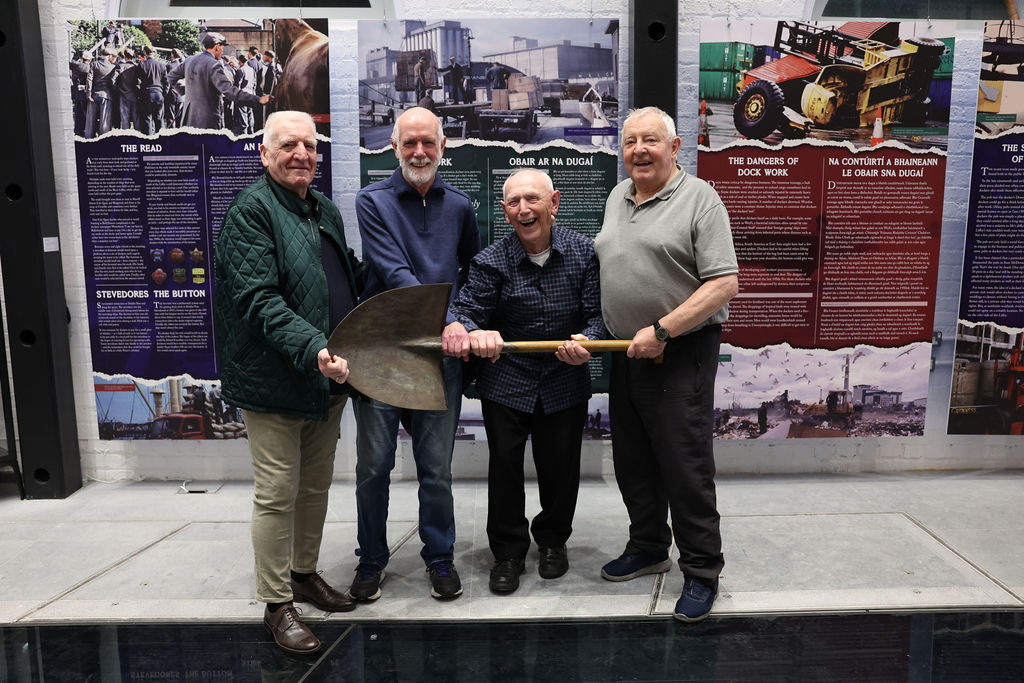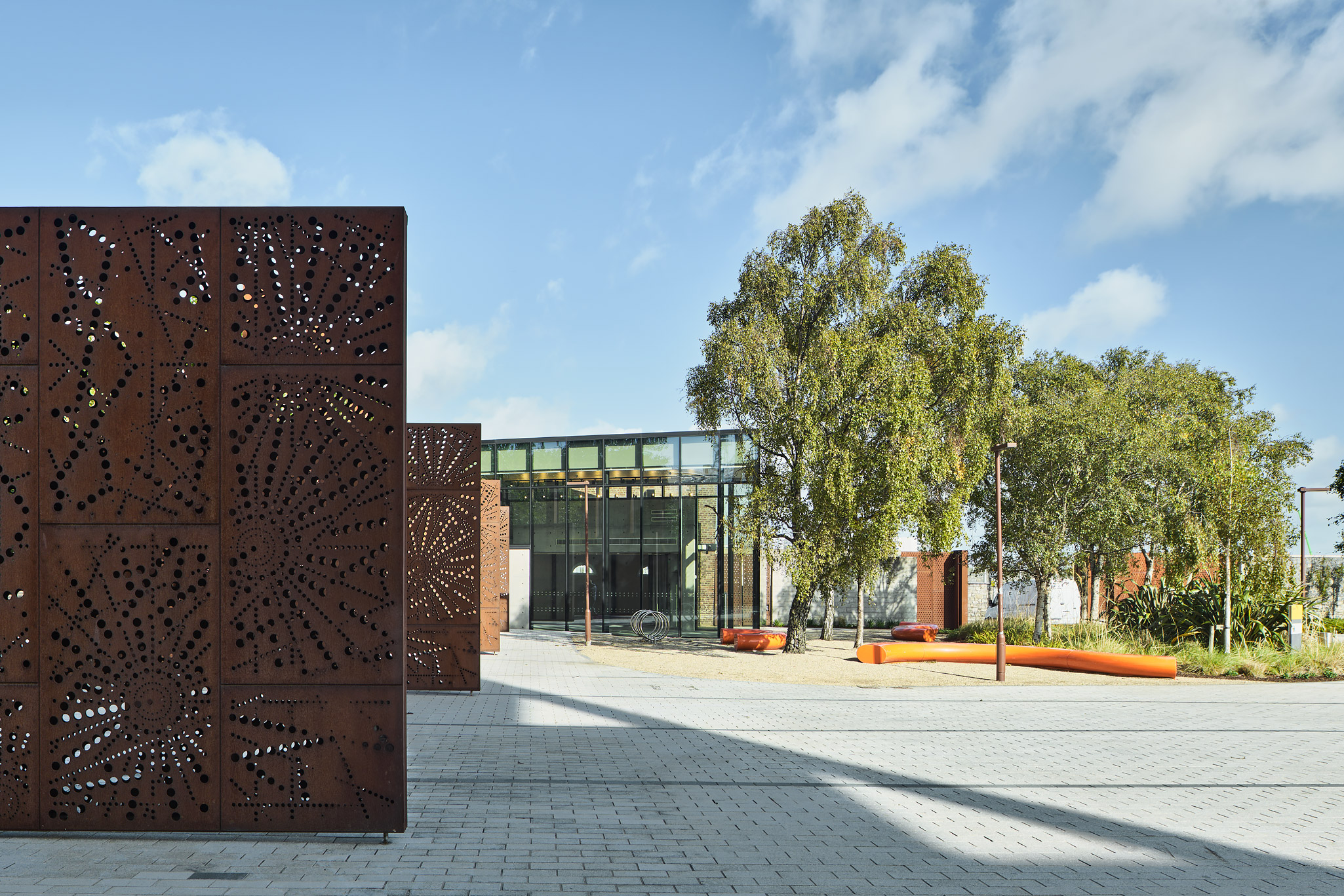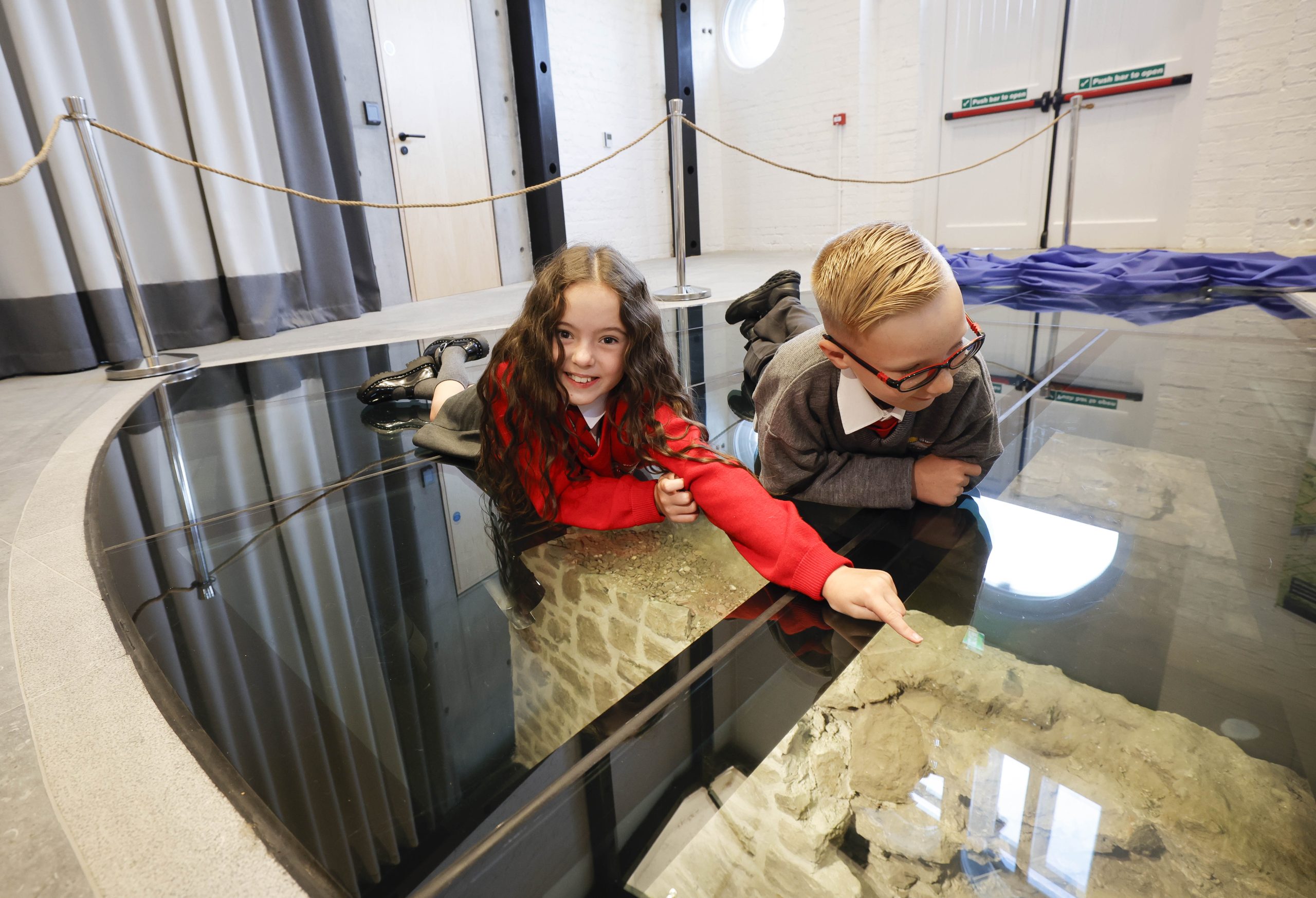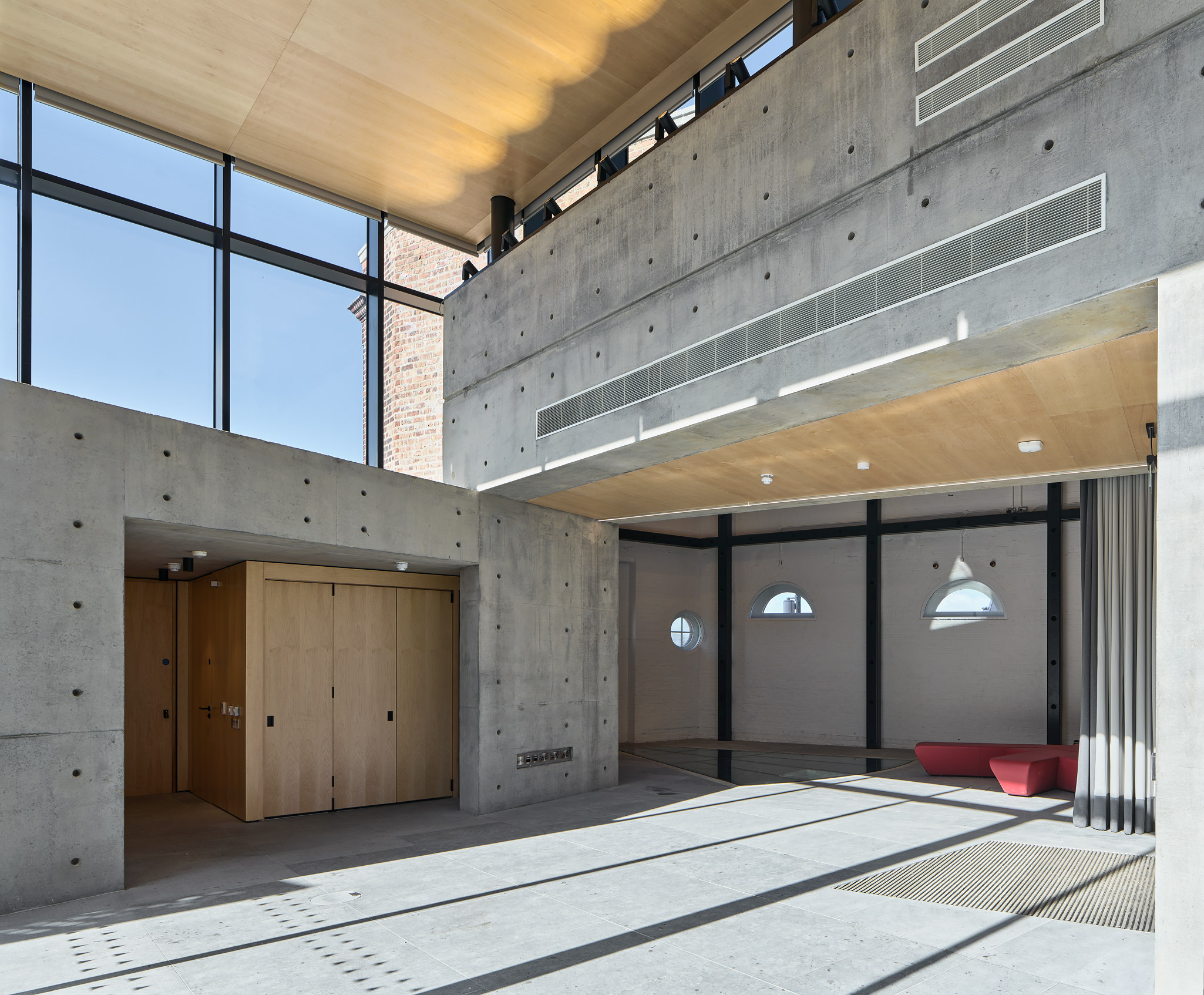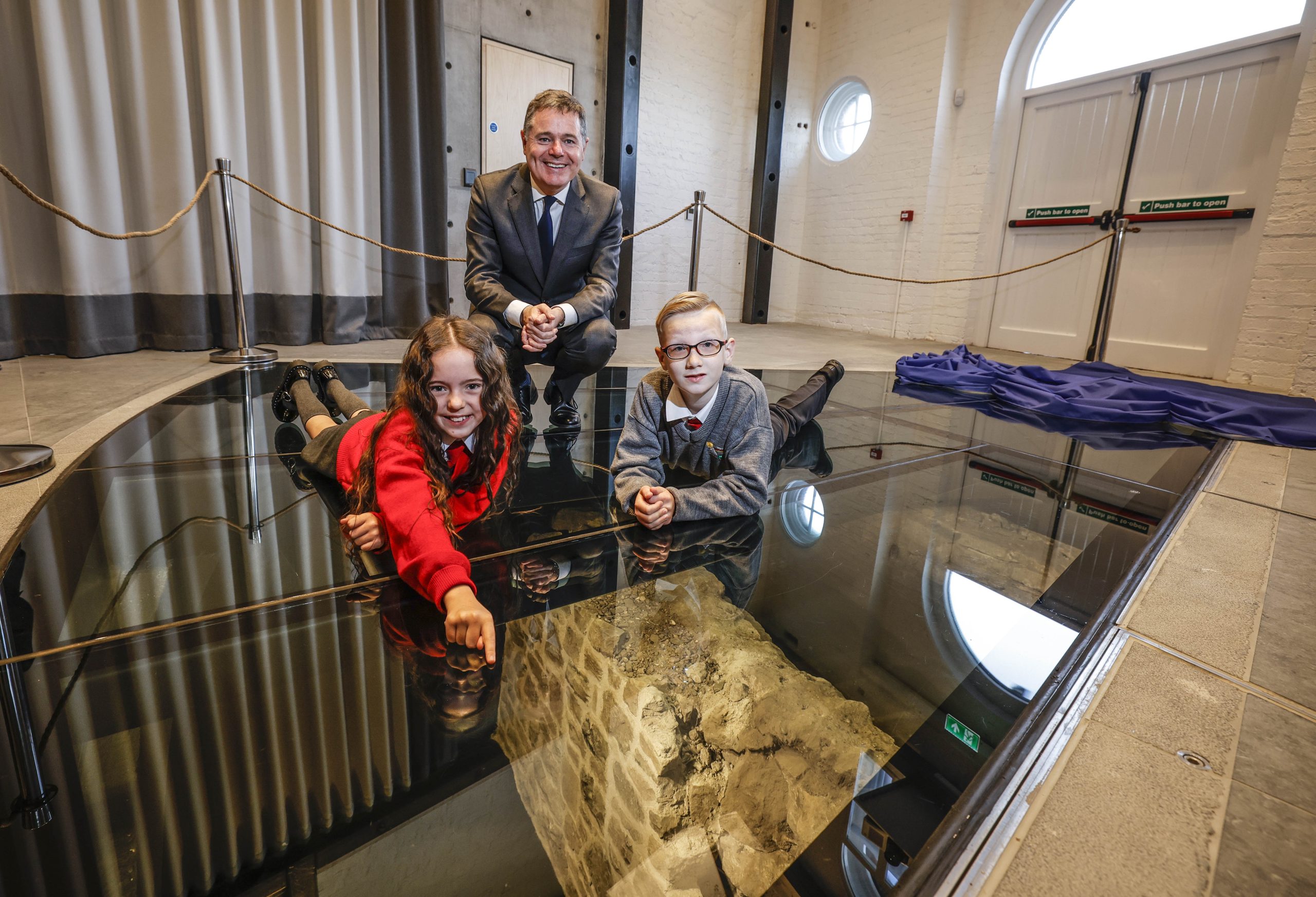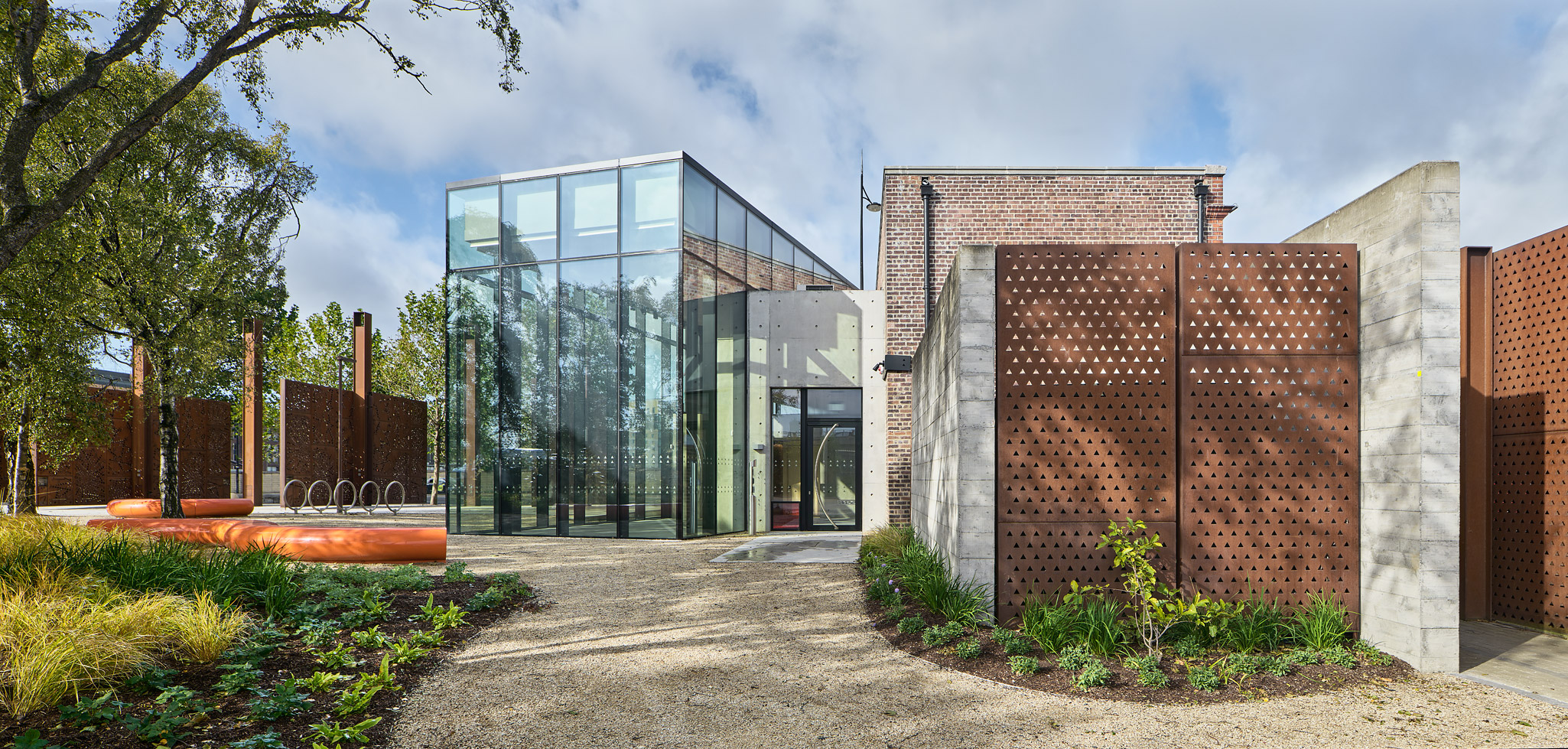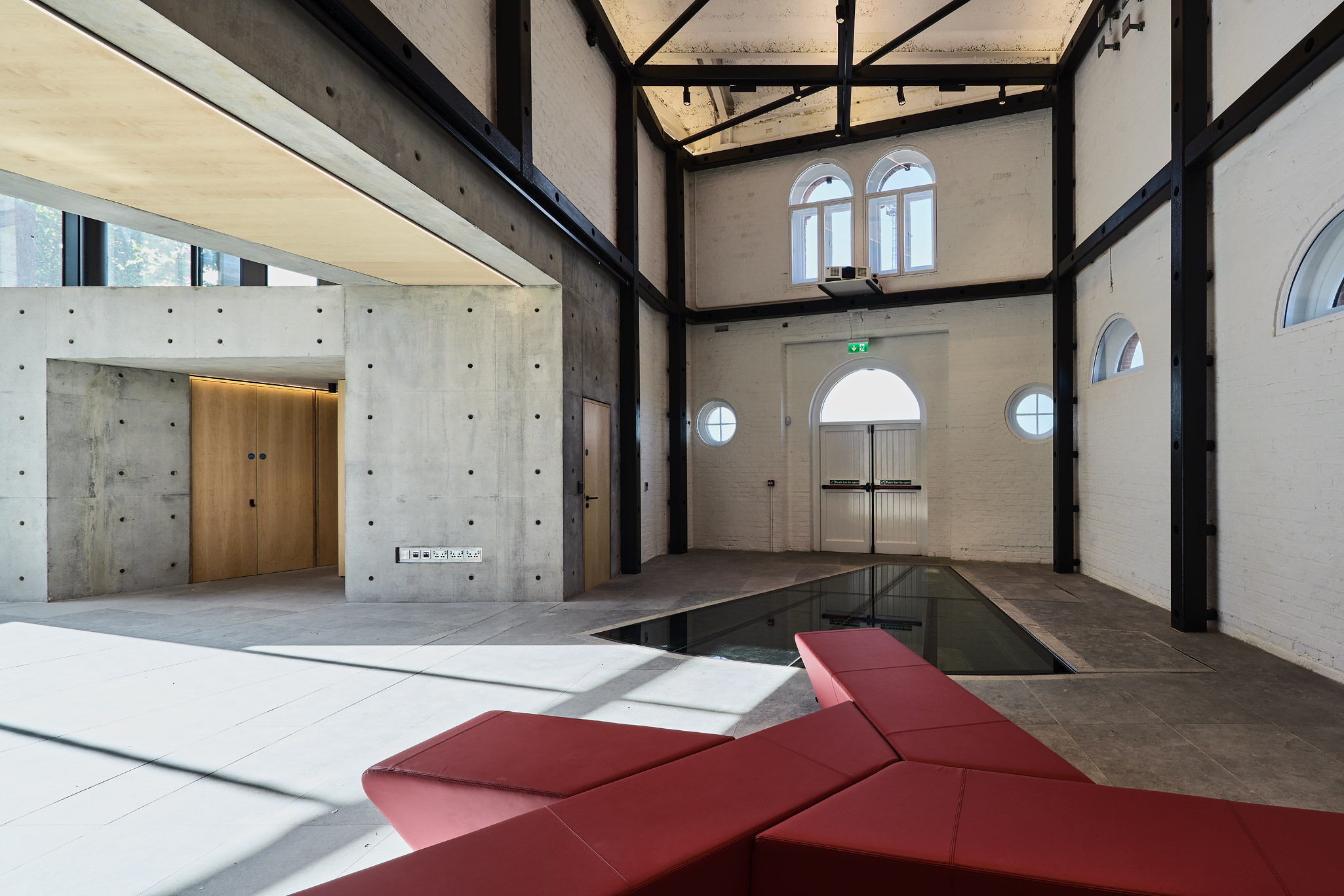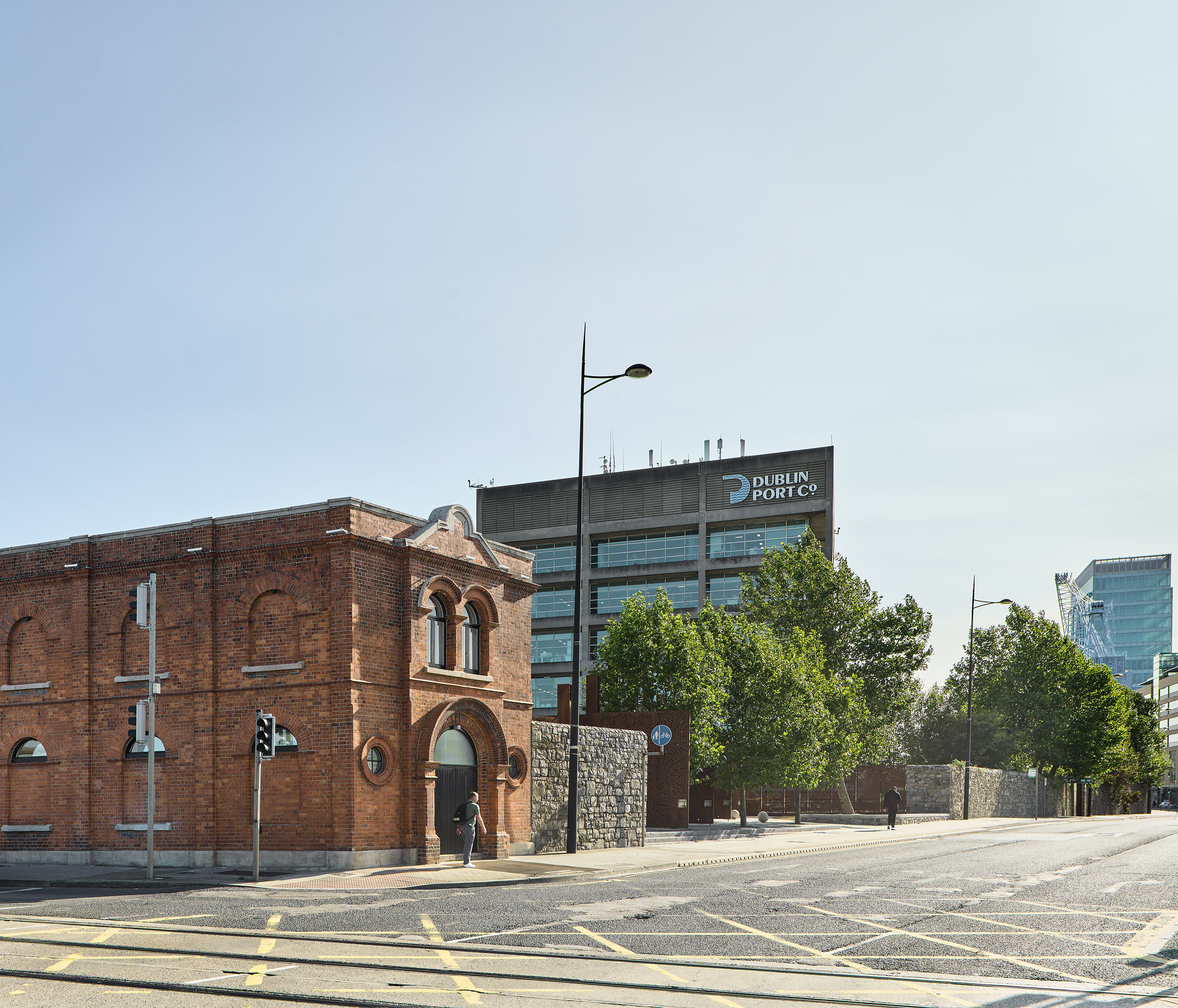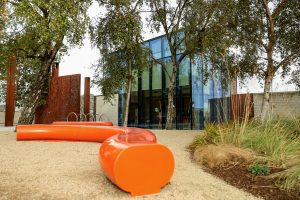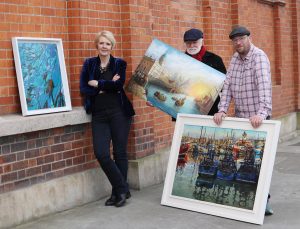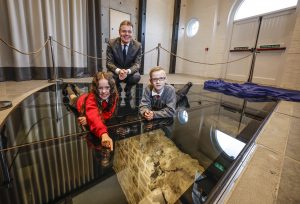The redbrick Substation, built in the early 20th century, which is located on the corner of East Wall Road and Alexandra Road, once played a pivotal role in the early electrification of Dublin Port. The building has been expertly restored and reimagined by the team at Dublin Port – with the help of Dunwoody & Dobson and Darmody Architecture – as a modern museum that will play a central role in telling Dublin Port’s story to audiences today.
During refurbishment works, part of the city’s original sea wall, built in 1728, was discovered beneath the Substation. The wall once enclosed the reclaimed land of the North Lotts, serving as a polder and the city’s eastern sea boundary. As the port expanded eastward, the wall became obsolete, and its facing stones were likely reused to construct the 3-metre-high boundary wall visible from East Wall Road. The area known as East Wall takes its name from this original sea wall.
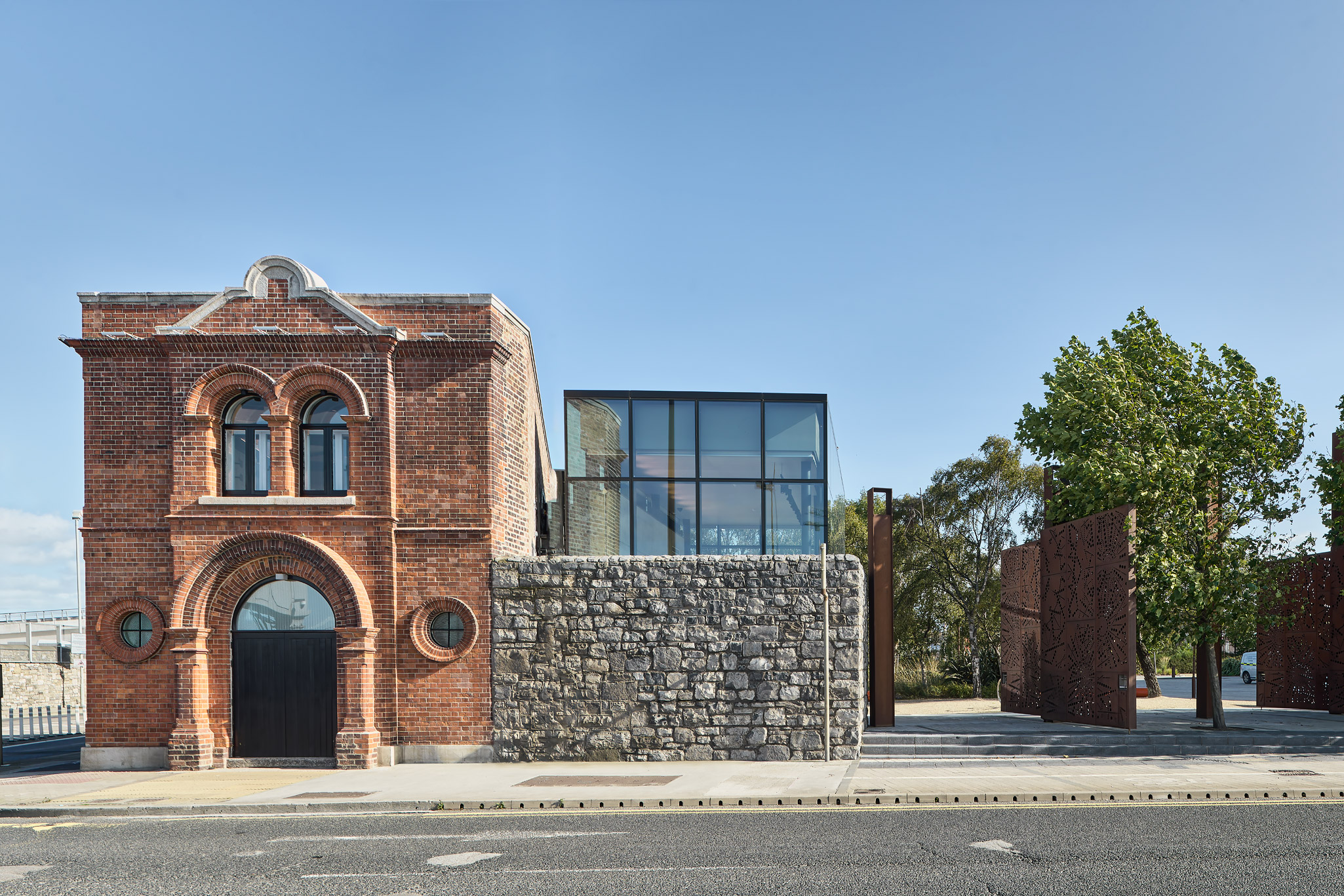
History of Substation
Originally slated for demolition in 2016, the former ESB Substation is now a protected structure, whose historic value has been recognised and valued and was the subject of an ambitious restoration, which saw the original two-storey redbrick building made secure, increasing to double-height as the first floor was removed, and eventually being joined by a completely new, mostly glass extension, which has doubled the building’s footprint.
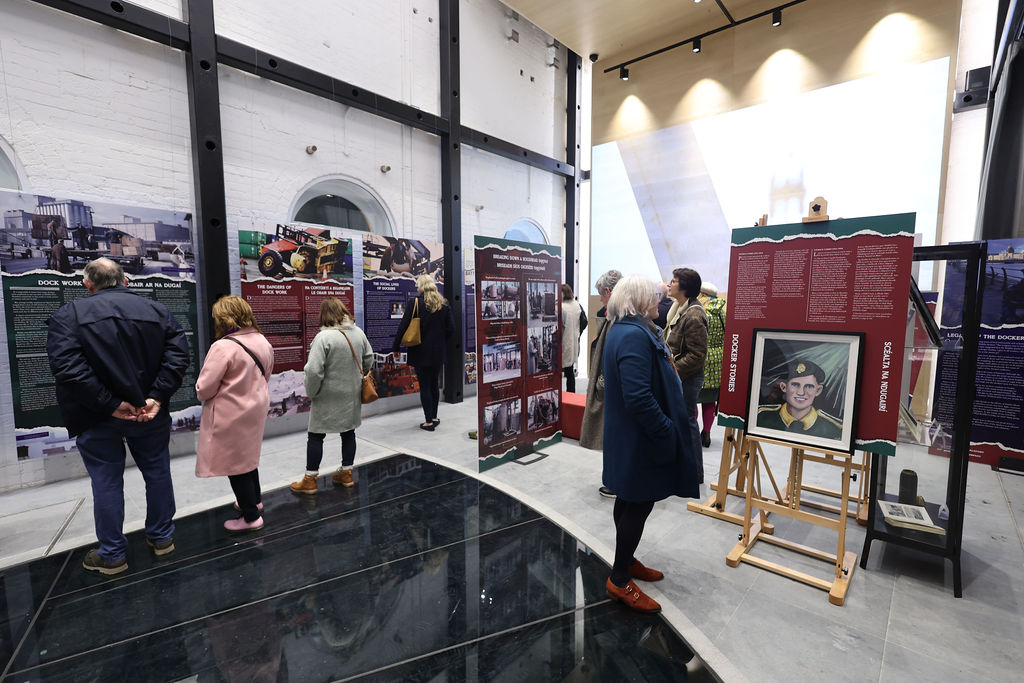
Future for the Substation
The Substation forms part of the Distributed Museum concept, like the Diving Bell and Crane 292, which are strong visual symbols of the Port and its functions. In many ways, the Substation marks the physical dividing line between the City and the Port and has considerable potential to be an anchor for the entire Port experience. As a multi-functional space, it will host a range of small-scale events such as lectures and seminars, poetry reading, music recital, intimate experimental theatre performance, pop-up café, or a teaching space.


